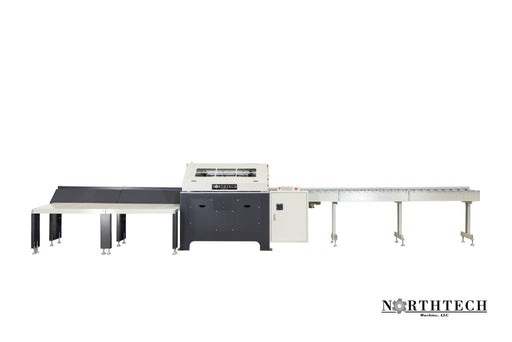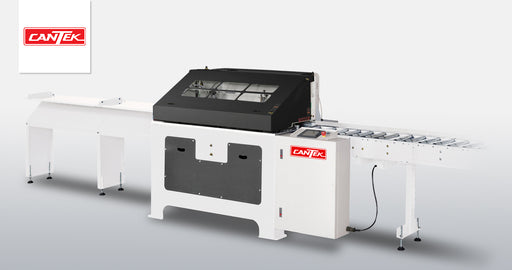An end matcher is a specialized woodworking machine designed to create precise tongue and groove joints on the ends of wood pieces. Its primary function is to mill complementary profiles on the ends of boards, allowing them to interlock seamlessly for strong and seamless joints. End matchers are commonly used in flooring, paneling, and millwork industries to create end-matched products that enhance stability, aesthetics, and structural integrity.
Key Features of End Matchers
Precision Machining: End matchers feature precision cutting heads or milling spindles that ensure accurate and consistent joint profiles on wood pieces.
Adjustable Settings: Many end matchers come with adjustable settings for cutting depth, width, and profile shape, allowing for customization based on the desired joint configuration.
Automatic Feeding Systems: Some end matchers feature automatic feeding systems that streamline the feeding and positioning of workpieces, increasing productivity and reducing operator fatigue.
Dust Collection: Integrated dust collection systems help keep the workspace clean and reduce airborne particles for improved safety and visibility.
User-Friendly Controls: End matchers are equipped with user-friendly controls and interfaces for easy operation and setup, ensuring efficient workflow and minimal downtime.
Applications of End Matchers
Flooring Production: End matchers are used in flooring manufacturing to create tongue and groove joints on hardwood, engineered wood, and laminate flooring products.
Paneling and Cladding: End matchers are employed in the production of paneling, cladding, and siding products to create tight-fitting joints that enhance structural stability and visual appeal.
Millwork and Joinery: End matchers play a crucial role in producing millwork components such as moldings, trim, and architectural details with precise and seamless joints.
Cabinetmaking: End matchers are utilized in cabinetmaking and furniture production to create strong and durable joints on cabinet doors, drawer fronts, and furniture panels.
Choosing the Right End Matcher
Production Volume: Consider the production volume and throughput requirements of your woodworking operation to choose an end matcher that can meet your production demands.
Joint Configuration: Select an end matcher with adjustable settings to accommodate different tongue and groove profiles and configurations required for your specific applications.
Accuracy and Precision: Look for an end matcher with robust construction and precision machining capabilities to ensure consistent and accurate joints for high-quality end-matched products.
Integration with Workflow: Evaluate how the end matcher integrates with your existing workflow and production processes to maximize efficiency and minimize bottlenecks.


